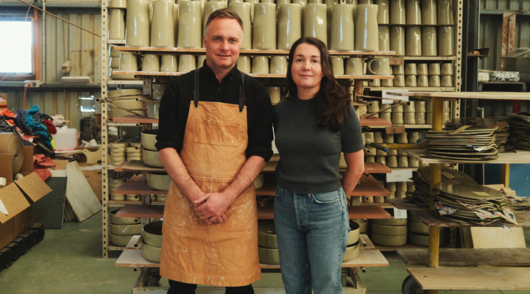When it comes to retail categories, few have seen as much movement this year as the luggage and travel goods market. From international brands like Australia’s July to locally owned brands like Béis, the US luggage sector is getting crowded. As analytics firm Statista reported, revenue in the luggage and bag market totaled $29.57 billion in the US this year. The firm projected the market will experience an annual growth rate of 0.65 per cent between 2024 to 2029. With so many pl
o many players, it can be difficult for brands, particularly legacy retailers, to keep up with the competition.
However, one such legacy retailer, Calpak, is not standing still. It opened its first permanent brick-and-mortar location this month at Century City Mall in Los Angeles, California.
While younger consumers, such as those in the Gen Z age group, are more likely to discover new products via social media, market research firm eMarketer confirmed that over half of these shoppers (51.9 per cent) still greatly prefer finalizing purchases in-store.
As Jeannie Shin, Calpak’s vice president of marketing, told Inside Retail, “Calpak has always been deeply attuned to customer needs, and with travel resuming at full force, we noticed an increased demand for an in-person experience where our customers can touch, test, and engage with our products in a physical space.”
Calpak’s foray into brick-and-mortar
Calpak’s new Los Angeles store is certainly not the brand’s first dive into the world of physical retail.
In 2019, Calpak held a four-day pop-up in New York City, which led to the majority of inventory selling out.
The event’s success inspired the company to look into opening a permanent store in 2020. These plans understandably were delayed due to the closure of brick-and-mortar stores during the pandemic.
Calpak took the setback in stride, using the time to further focus on its product expansion strategy and delve into categories such as baby gear.
While products like a diaper bag may be a new look for the luggage brand, it reflects the work Calpak has been doing for over 10 years to adapt its merchandising assortment for the current generation of consumers.
How Calpak is keeping its legacy fresh
Calpak was founded by Edward and Judy Kwon and first launched onto the retail scene in 1989.
Today, it’s run by their daughter and Calpak’s current president Jennifer Kwan. She zeroed in on product development when she joined the team in 2013.
Staying ahead of the trend that brands like Dagne Dover have normalized, Kwan led the company to delve into multi-tier travel and lifestyle products, from laptops to makeup cases.
From 2016 to 2023, the company steadily expanded its stock-keeping unit (SKU) count from around 10 to 15 in 2016 to over 545 today.
This strategy led the brand to experience 100 per cent year-over-year growth as of July 2023.
While it may be a bit unusual for a 35-year-old brand to just now launch into brick-and-mortar, with a fresh array of merchandise available for browsing and a growing desire to return to stores, Calpak’s timing has proven itself to be on-point.
What’s next in store for Calpak
“While we’re incredibly focused on the success of our LA store, we’re looking at New York as the next likely destination,” Shin remarked. The enthusiasm from our previous pop-up in NYC showed us that there’s a significant appetite for our products there, and it aligns with our goal of serving customers who value both function and style in their travel accessories.”
The marketing vice president added that the brand’s ongoing brick-and-mortar expansion will be very strategic and intentional.
“We want each location to serve as a unique extension of our brand, bringing our commitment to making travel a joyful experience to life,” she explained.
“While we have our eyes on key markets across the country, we’re taking a measured approach to ensure each store opening is meaningful, both for our customers and for Calpak’s growth. By focusing on high-traffic areas and cities with a strong affinity for travel, we’re confident in our ability to create lasting connections with our audience.”







